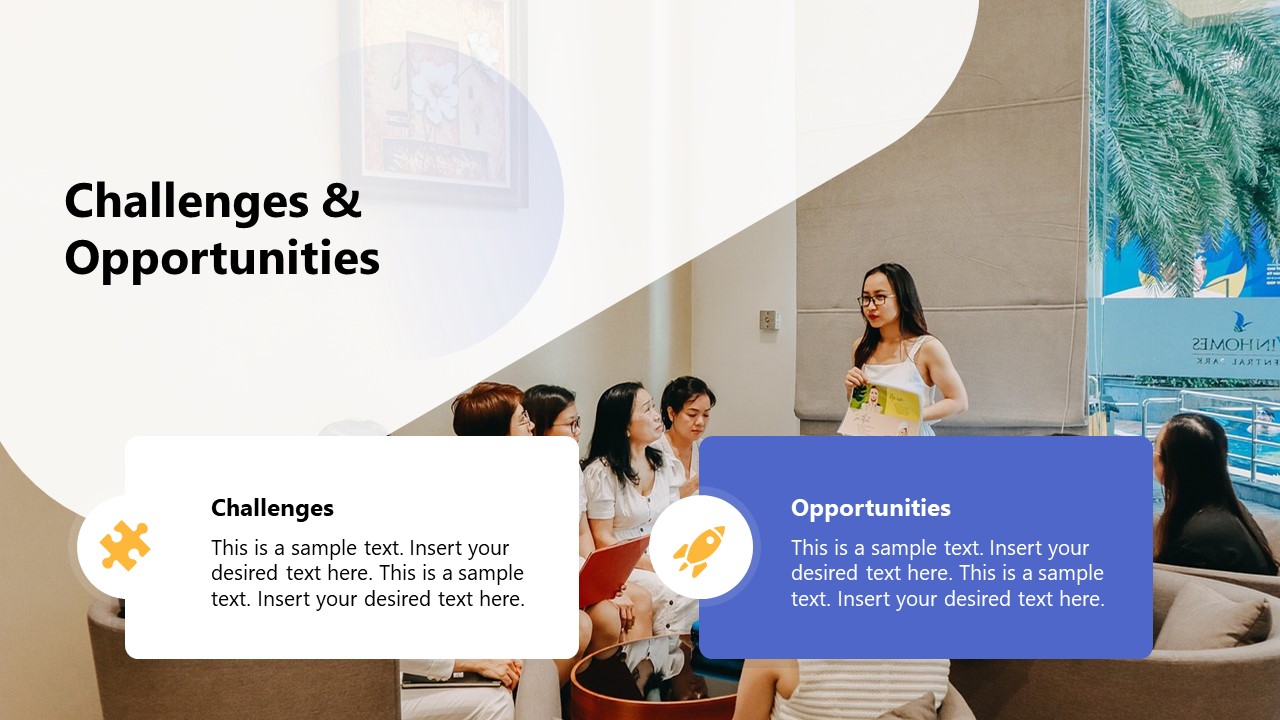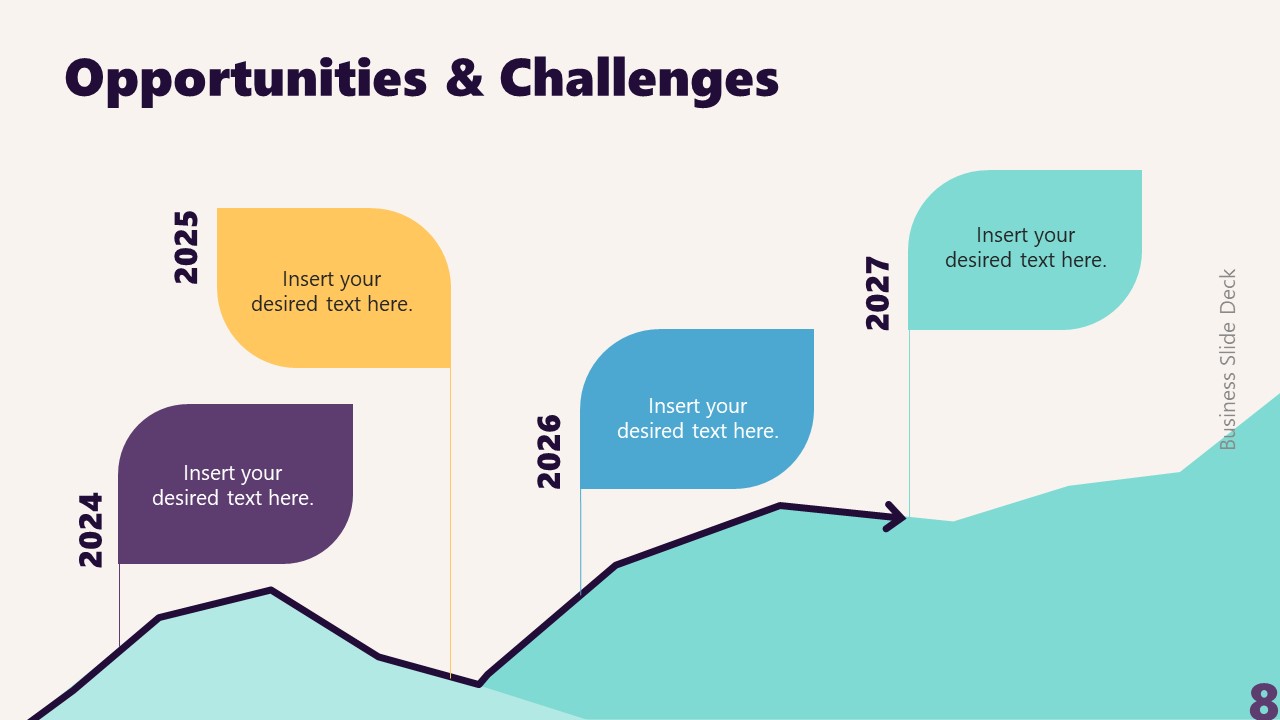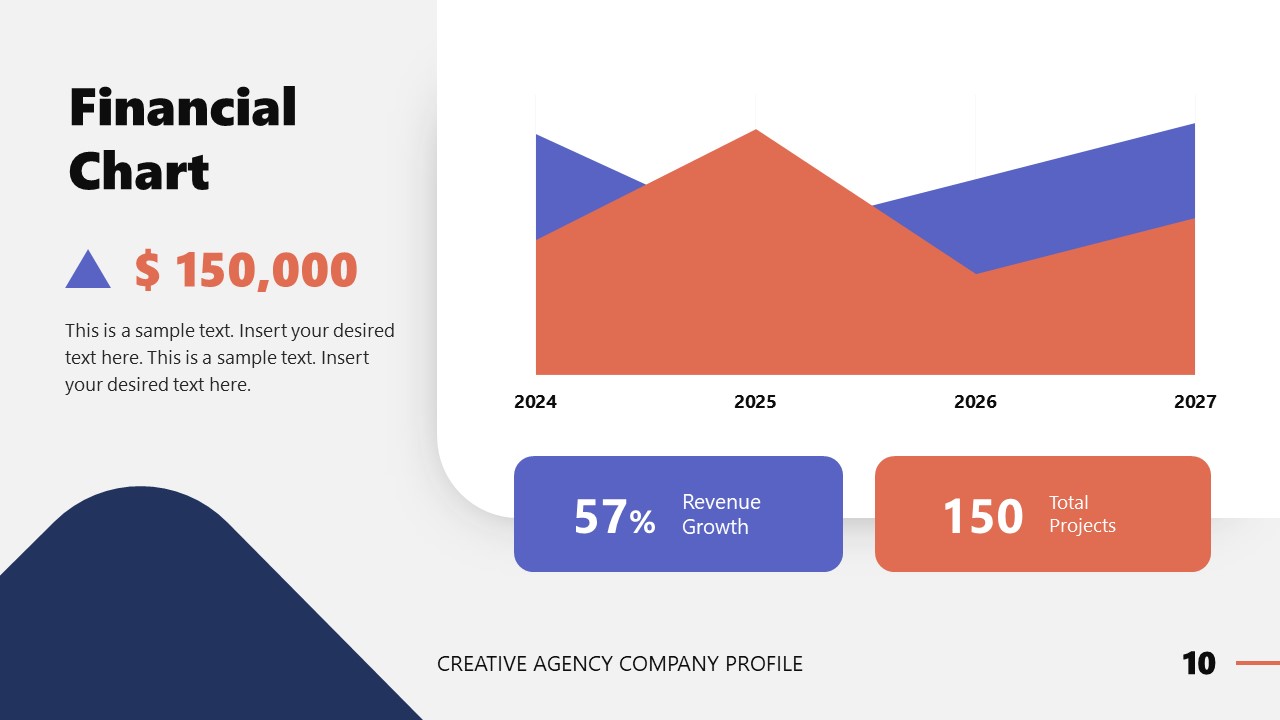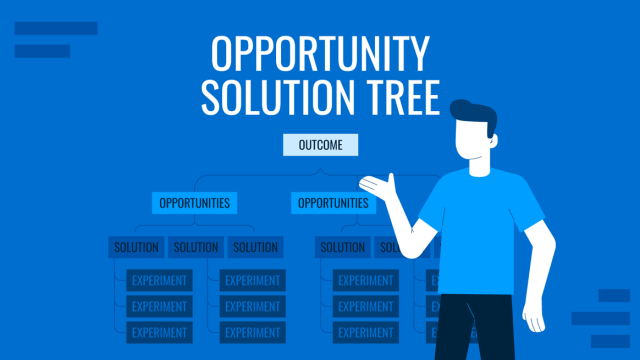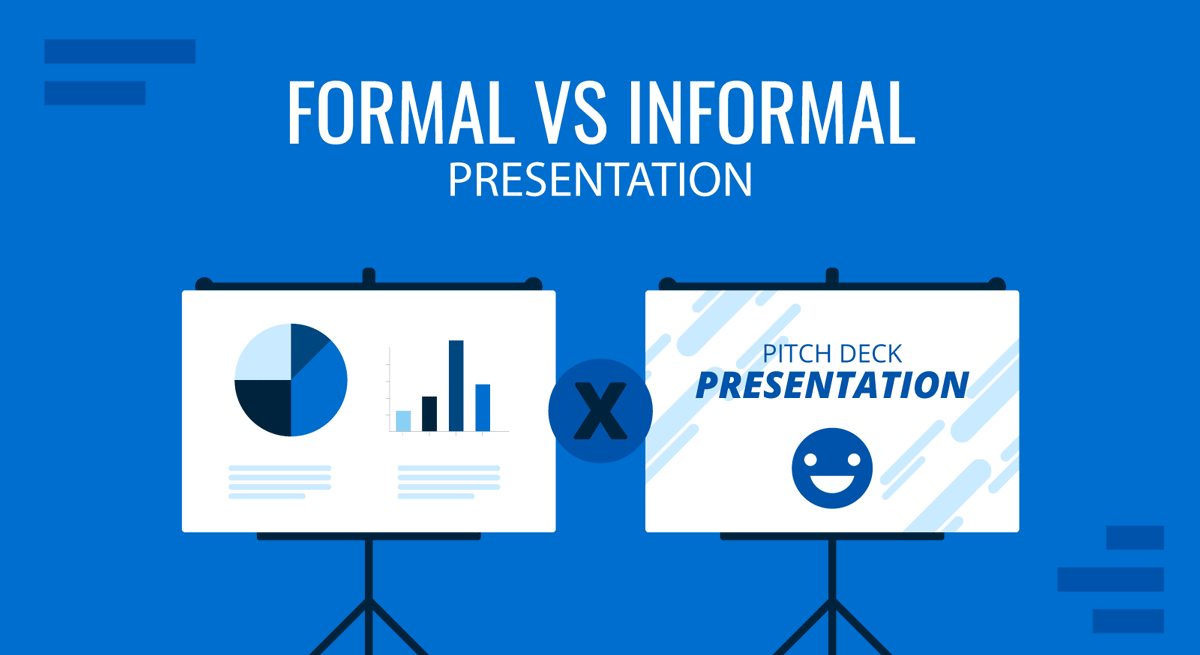
Delivering an effective presentation in professional environments involves mastering two presentation styles: formal and informal presentations. Both approaches serve different purposes and are used in various business and professional settings. While formal presentations demand a high level of structure and professionalism, informal presentations are more relaxed and allow greater flexibility.
In today’s article, we will dwell on the differences between both formats, how to structure them, and how to transition between presentation formats.
Table of Contents
- What is a Formal Presentation?
- What is an Informal Presentation?
- Advantages and Challenges of Each Style
- Structure and Organization
- Visual and Audio Aids
- Level of Interaction
- Dress Code and Professional Appearance
- How to Transition Between Formal and Informal Presentation Formats
- Recommended PPT Templates for Formal and Informal Presentations
- FAQs
- Final Words
What is a Formal Presentation?
A formal presentation is a structured and polished delivery of information, typically in a professional or official setting, where the speaker follows a clear, organized format. It often adheres to a predetermined agenda, with well-defined sections such as an introduction, main points, and a conclusion. A formal presentation aims to communicate important information, ideas, or proposals precisely and clearly, usually to an audience including decision-makers, colleagues, or clients.
Key characteristics of formal presentations include professional language, minimal casual interaction, and strict time management. Visual aids such as slides, charts, and graphs are frequently employed to support the speaker’s points, and these materials are typically designed with a high degree of professionalism and consistency, often following a corporate or industry-standard template.
What is an Informal Presentation?
On the other hand, an informal presentation is a more relaxed and flexible form of delivering information. It is often characterized by a conversational tone and a less rigid structure than formal presentations. Unlike formal presentations, where the content follows a strict agenda, informal presentations allow the speaker to adapt based on audience feedback and interaction, making the presentation more dynamic and engaging.
Vital elements of informal presentations include a casual delivery style, where the speaker often uses everyday language and may incorporate humor or personal anecdotes to connect with the audience. Visual aids, if used, tend to be more superficial and less polished, focusing more on enhancing understanding than on professional design. Informal presentations are more interactive, with ongoing opportunities for the audience to ask questions, offer input, or engage in discussions throughout the session rather than waiting for a dedicated Q&A session at the end.
Advantages and Challenges of Each Style
Formal Presentations
Advantages:
- Precise, structured delivery ensures that the message is concise and well-organized.
- Professional tone and appearance enhance credibility, particularly in high-stakes situations.
- It is ideal for large audiences or situations requiring precise information transfer.
Challenges:
- Limited flexibility to adapt based on audience feedback during the presentation.
- Rigid time constraints can be stressful and reduce engagement.
- It can feel impersonal or distant, reducing audience connection.
Informal Presentations
Advantages:
- Encourages audience interaction and fosters a collaborative environment.
- Greater flexibility allows presenters to adjust content in real time.
- Can be more engaging and personable, helping to build rapport.
Challenges:
- A lack of structure can lead to disorganized or unfocused presentations.
- Risk of going off-topic or exceeding time limits due to spontaneous audience engagement.
- It may appear less professional in settings where formality is expected.
Structure and Organization
Formal Presentations
Typically, a formal presentation follows a well-defined presentation structure composed of three main sections: the introduction, the body, and the conclusion. Each section serves a specific purpose in guiding the audience through the information presented.
1. Introduction
The introduction sets the tone and framework for the presentation. It usually begins with a formal greeting and an overview of the topic. The speaker may provide context or background information to help the audience understand why the presentation is essential. Key elements of a formal introduction include:
- A clear statement of the presentation’s purpose and objectives.
- A brief outline of what will be covered.
- Setting expectations for the flow of information and how audience interaction will be handled (e.g., indicating when questions can be asked).
The introduction is often designed to capture the audience’s attention while laying out the roadmap for the entire presentation. It prepares the audience for the more detailed content that will follow.

2. Body
The body of the presentation contains the core information and is typically organized into clear, distinct sections or main points. Each point is presented logically, with supporting evidence, examples, or data to reinforce the message. Depending on the complexity of the topic, the body may be subdivided into various sections, each with:
- A main idea or argument.
- Supporting details like statistics, case studies, charts, or visual aids.
- Transitional statements between sections to maintain flow and clarity.
In formal presentations, the body must be structured to ensure that all key points are addressed systematically. Presenters may use subheadings, numbered lists, or bullet points to organize information clearly, providing the audience can follow the logic of the argument or information being presented.
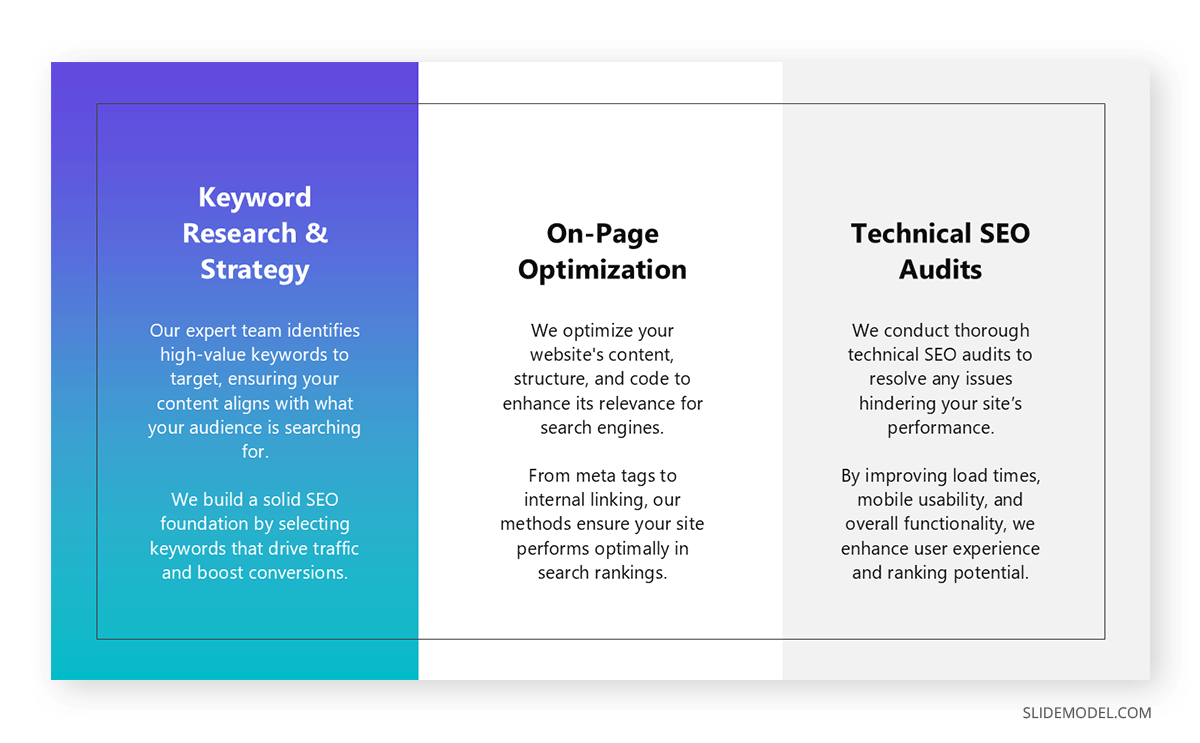
3. Conclusion
The conclusion summarizes the key points covered in the presentation and reinforces the core message. It may include:
- A concise restatement of the main points.
- A closing argument or call to action, where appropriate.
- A formal invitation for questions, feedback, or further discussion.
Knowing how to end a presentation is critical in leaving a lasting impression and providing a sense of closure. It ties together the presentation’s content and ensures the audience walks away with a clear understanding of the information shared.
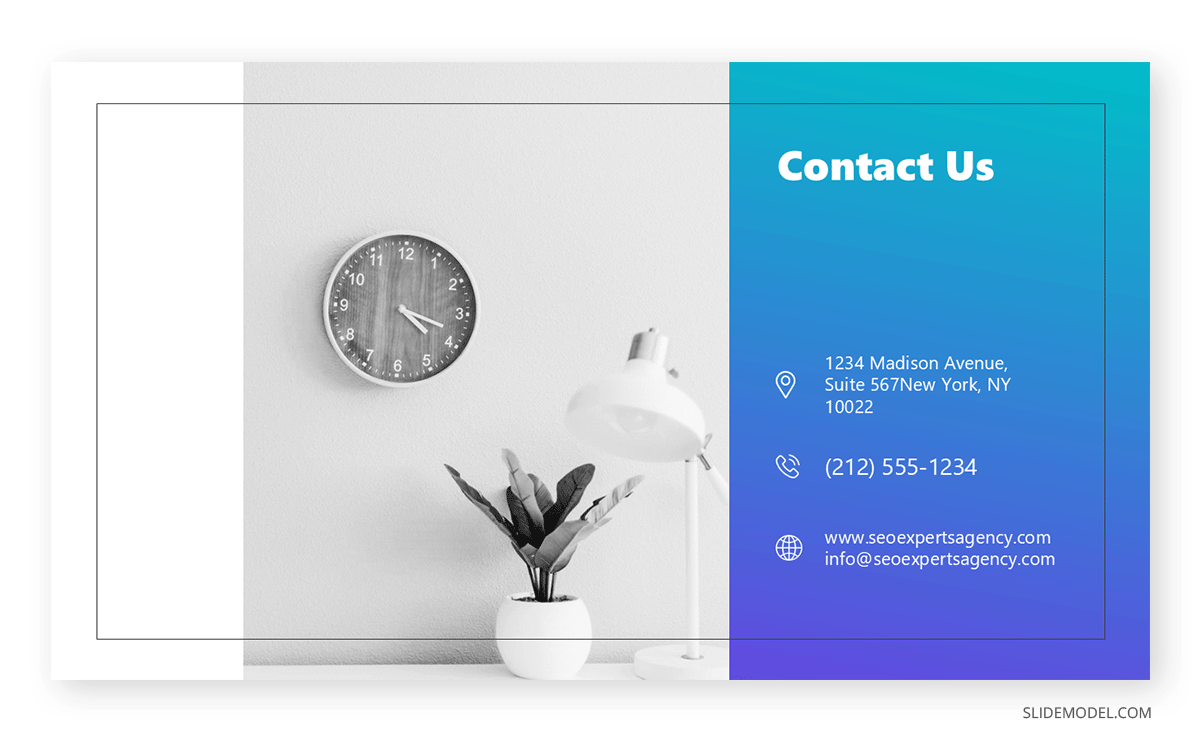
Informal Presentations
While informal presentations still generally follow a three-part framework—introduction, body, and conclusion—the way these elements are presented is less rigid. The emphasis is on fostering engagement, interaction, and dialogue with the audience, making the structure more fluid and responsive to audience needs.
1. Introduction
The introduction in an informal presentation is often casual and conversational. The goal is to establish rapport with the audience and set a relaxed tone from the start. Unlike formal presentations, there is less focus on protocol and more on making the audience feel comfortable and involved.
- The speaker may start the presentation with a question, an anecdote, or a humorous remark to break the ice.
- Instead of providing a strict presentation outline, the speaker might give a broad overview of the topic, hinting at flexibility in how the information will be presented.
- The introduction may also involve initial interaction with the audience, such as encouraging them to ask questions at any time.
The relaxed nature of the introduction helps set the stage for a more interactive and dynamic session.
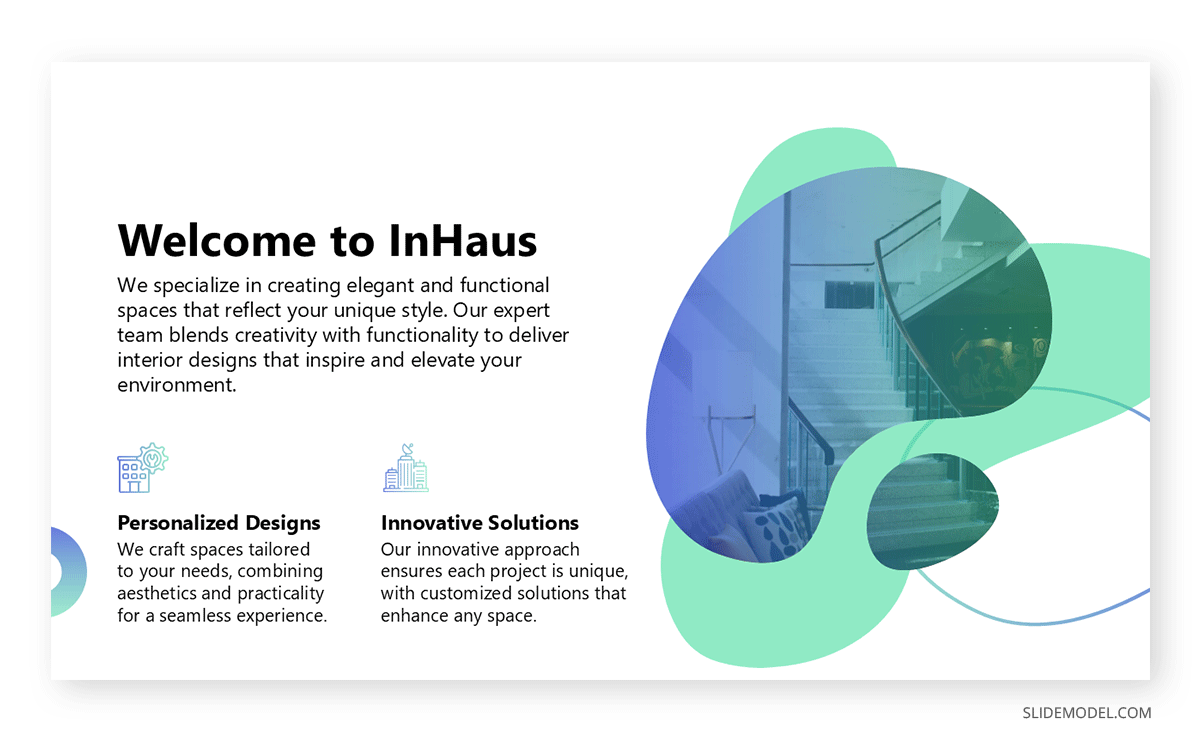
2. Body
The body is much more adaptable in informal presentations than in formal settings. While the speaker still covers key points or content, the structure is not as rigid, and the flow may change depending on feedback or audience engagement. The presentation may not have distinct sections but evolve based on the discussion.
- Presenters may introduce key points organically, often weaving them into conversations with the audience.
- Supporting material, such as case studies or storytelling slides, can be introduced spontaneously, depending on the direction of the conversation.
- The presenter might digress slightly based on audience interest, offering related insights or anecdotes as needed.
- The transition between points is often informal and conversational, reflecting the presenter’s adaptability.
The body of an informal presentation thrives on audience interaction, with a back-and-forth dynamic that can shift the presentation’s direction based on feedback and questions.
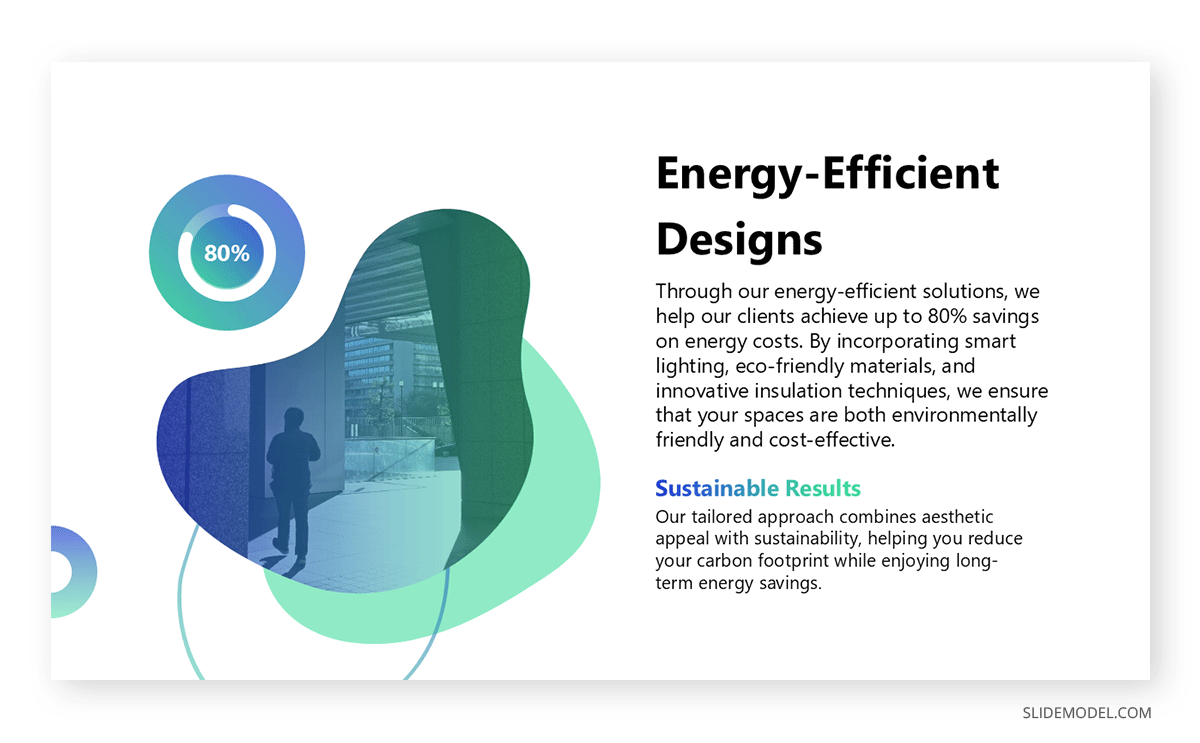
3. Conclusion
The conclusion of an informal presentation is often less formal and may be shaped by the interactions during the session. Instead of a formal summary of all points, the conclusion might:
- Briefly conversationally recap the key takeaways.
- Acknowledge any valuable audience contributions or insights shared during the presentation.
- End with an open invitation for further discussion or questions, often unstructured and casual.
In informal presentations, the conclusion may feel more like a segue into further dialogue than a definitive closure, keeping the atmosphere collaborative and open-ended. This flexibility allows the presenter to engage the audience without the pressure of a strict ending.
Visual and Audio Aids
Visual aids, such as PowerPoint slides, graphs, and charts, are carefully designed to complement the speaker’s message. In formal presentations, these materials are often uniform in style, adhering to corporate branding or presentation guidelines. The visuals are typically high-quality, with precise data points, and are used to emphasize key facts, statistics, or complex concepts.
The 7×7 rule in PowerPoint is particularly useful to structure content in formal presentations, suggesting no more than seven lines of text per slide, with no more than seven words per line, ensuring clarity and avoiding clutter. Audio aids, if included, are usually pre-recorded and seamlessly integrated into the presentation. Videos, sound clips, or background audio are synchronized with the speech, contributing to the polished nature of the formal environment.
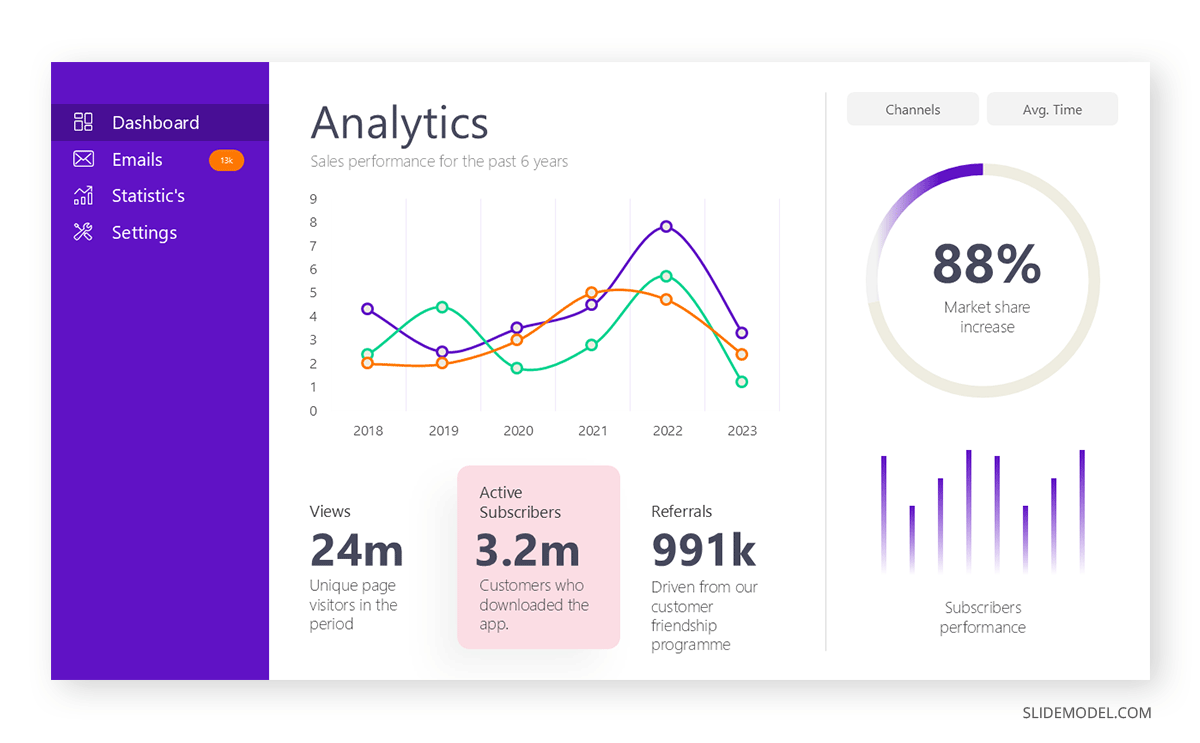
In contrast, visual and audio aids in informal presentations tend to be less polished and more adaptable. Presenters may use basic tools like whiteboards, flip charts, or even ad-hoc sketches to illustrate points. PowerPoint slides or other digital media, if used, are often simpler, focusing on minimal text or casual imagery rather than heavily detailed designs. On this behalf, the 10 20 30 rule of PowerPoint presentations can help speakers arrange their content, especially if the presentation is due to be lengthy.
The emphasis in informal settings is on flexibility, allowing the presenter to adjust visual aids spontaneously based on audience interaction or changing conversation flows – we can take, for instance, the Pecha Kucha presentation format as a fine example of this. Audio aids are rarely used in informal settings, as they can disrupt the fluid, conversational nature of the presentation. If employed, they are usually brief and integrated with less formality.

Level of Interaction
In formal presentations, interaction is typically structured and restrained to preserve the professional atmosphere and ensure that the speaker maintains control over the flow of information. The presenter usually delivers their content without interruptions, and audience participation is limited to specific times, usually at the end of the presentation during a Q&A session. This formal approach helps ensure that the presentation stays focused, on time, and adheres to the pre-planned agenda.
The formality often extends to how questions are handled. Audience members might be asked to hold their questions until the presentation is finished, or questions may be submitted in writing or through a moderator, ensuring that the presenter can address them in an organized and orderly fashion. This method keeps the focus on delivering content and minimizes the risk of derailing the presentation with off-topic questions or unexpected discussions.
In contrast, informal presentations promote a much higher level of interaction throughout the entire session. Here, the audience is typically encouraged to ask questions or offer feedback whenever they feel it’s necessary, as well as participate in exercises with fellow attendees. This interaction might take place during the actual presentation, making the audience an active participant rather than a passive listener.
In an informal setting, the presenter may invite audience contributions, fostering a two-way conversation rather than a one-sided lecture. This allows for more dynamic exchanges and enables the presenter to adjust their content in real-time based on the audience’s responses. The less structured format means that the presentation can shift direction based on the interaction, leading to more engaging and personalized discussions.
Dress Code and Professional Appearance
There are noticeable distinctions between the formal and informal presentation formats in terms of the dress code and the overall appearance of the presenter and venue. Formal presentations, as the term suggests, require presenters to wear business attire that reflects the seriousness and professionalism of the event. This can range from full business suits to conservative, polished outfits that align with corporate dress standards. Such attire aims to convey authority, competence, and respect for the occasion and the audience.
In addition to clothing, attention is given to grooming and presentation details. Presenters are expected to maintain a neat, professional appearance—well-groomed hair, clean shoes, and minimal accessories are common expectations. The choice of attire should also be aligned with the audience’s expectations, the corporate culture, or the industry standards in which the presentation is taking place.
The venue location is important, and if it does not occur inside a corporate environment, one can expect a fully-conditioned room with comfortable chairs, appropriate lighting, high-quality audio/projector, gadgets such as laser pointers, presentation handouts, etc. Not a single detail is ignored – especially for large scale events – as the expected outcome is to foster networking across the event.
Informal presentations can occur in many places, ranging from in-office environments to large rooms with a more relaxed atmosphere. Personal image must be taken care of, but the audience will certainly feel intimidated if you opt for formal attire rather than something that connects with their aesthetic values. The idea is to present a more approachable, relatable image without sacrificing professionalism.
For example, presenters might wear slacks, a shirt, or a dress with more relaxed styling in a team meeting, brainstorming session, or internal workshop. While the appearance is still neat and professional, the clothing reflects the relaxed atmosphere. Grooming is still important, but there is less emphasis on perfection, with more leeway for personal style.
The focus in informal presentations is on creating an atmosphere of openness and engagement rather than establishing authority.
How to Transition Between Formal and Informal Presentation Formats
Successfully shifting between formal and informal presentation formats is a skill experienced presenters can struggle to master. To simplify this process, in our experience, all that’s required is some adjustments in:
- Tone
- Structure
- Audience interaction
Tone and Language
The tone of a formal presentation tends to be authoritative, with professional language, while informal presentations use a more conversational tone and approachable language.
- From Formal to Informal: Shift your tone from authoritative to conversational. Use everyday language, inject some humor if appropriate, and be more relaxed in your delivery. This will help create a more open atmosphere where the audience feels comfortable engaging with you.
- From Informal to Formal: When shifting to a formal presentation, adopt a more professional tone. Use precise, professional language and speak more slowly and deliberately. Avoid slang or overly casual phrases, and maintain a respectful distance between yourself and the audience.
Adjusting the Structure
The structure is rigid in formal presentations, with clearly defined sections such as an introduction, body, and conclusion. In contrast, informal presentations offer more flexibility, allowing the presenter to move between points based on audience interest or feedback.
- From Formal to Informal: If you are transitioning to an informal format, start by loosening the rigid flow of your content. Instead of sticking strictly to your script, allow the audience to guide some of the content delivery through their questions or reactions. Let the presentation evolve organically by shortening or expanding sections based on engagement.
- From Informal to Formal: If transitioning to a more formal format, ensure your content is structured into distinct segments. Outline the key points early on and stick to a clear sequence of information. Minimize tangents and spontaneous detours, keeping the presentation focused and on track.
Modify Audience Interaction
Audience interaction is limited and controlled in formal presentations, while in informal formats, the audience plays an active role throughout the session.
- From Formal to Informal: If transitioning to an informal format, invite spontaneous questions or feedback from the audience throughout the presentation. Encourage open dialogue, and be ready to respond to unplanned questions or discussions. This fosters a collaborative environment and keeps the audience engaged.
- From Informal to Formal: If moving to a more formal setting, reduce audience interaction to specific, scheduled points. Inform the audience that questions will be addressed at designated times, like at the end during a Q&A session. This helps maintain the flow of the presentation and ensures it remains structured.
Recommended PPT Templates for Formal and Informal Presentations
This section contains a selection of PPT templates intended for formal and informal presentations. Most of these templates are also compatible with Google Slides.
FAQs
Can I combine elements of both formal and informal presentation styles?
Yes, it’s possible to blend elements from both styles. For example, you can use formal slides while maintaining an informal tone in your speech. This can help engage your audience while still conveying professionalism.
Is there a specific setting where an informal presentation would be inappropriate?
Informal presentations might be inappropriate in high-stakes environments, like board meetings or investor pitches, where professionalism and a structured approach are crucial to maintaining credibility.
Does the audience size affect whether a presentation should be formal or informal?
Yes, larger audiences typically expect formal presentations to ensure clarity and professionalism, while smaller groups may benefit from an informal approach’s conversational and interactive nature.
Are formal presentations always longer than informal ones?
Not necessarily. While formal presentations often follow a stricter timeline, informal presentations can also be concise if the context allows for a more free-flowing exchange of ideas.
How do you handle interruptions in formal presentations vs. informal ones?
In formal presentations, interruptions are minimized, and questions are often reserved for the end. Interruptions are more common in informal settings, and presenters are encouraged to address questions or comments throughout.
How can I maintain professionalism in an informal presentation?
To maintain professionalism in an informal presentation, ensure your content is well-prepared and clear, even if your tone and interaction style are relaxed. Respect for time and audience engagement are key.
Can I switch from an informal tone to a formal one mid-presentation?
Yes, you can switch tones depending on the content being discussed. For example, you might use a formal tone for critical data points and revert to a more informal approach during interactive discussions.
Final Words
Understanding the differences between formal and informal presentations is crucial for experienced presenters looking to refine their skills and adapt to various professional settings. While formal presentations emphasize structure, professionalism, and controlled interaction, informal presentations offer flexibility, engagement, and a more conversational approach. Each style serves a distinct purpose, and the key to success lies in knowing when and how to apply each format based on the specific environment and audience expectations.
Think about your audience’s needs regarding the topic you select prior to tailoring your presentation to one style or another. In some cases, like business pitches, you won’t have any option but to stick to a formal style, but on plenty of other occasions, it’s another creative factor to play with.
